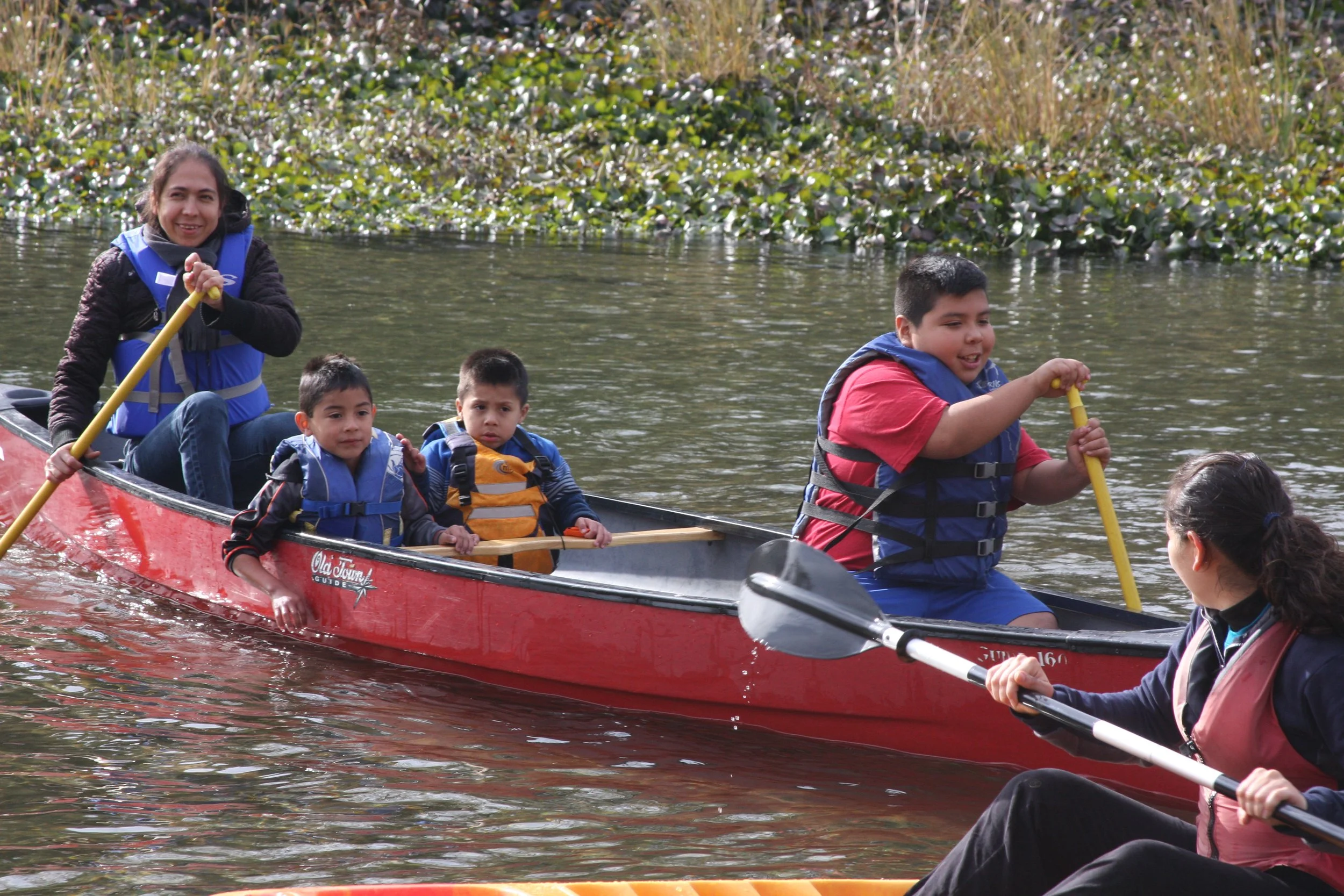Riverside Access in Modesto: A Community Changes Through Time
When TRT was founded in the early 1980s, the conversation around river conservation was dominated by those who had the means to enjoy the river’s natural beauty. Acknowledging the untapped potential for broader community involvement, particularly from those historically overlooked in environmental decision making, TRT initiated a campaign in the 2000s aimed at empowering the residents living in close proximity to the river in Modesto’s Airport Neighborhood, ensuring their voices and needs were heard and addressed in the river’s future management strategies.
A Glimpse into Modesto’s Past
The narrative of Modesto is deeply intertwined with the American Dust Bowl, as many who settled in the Airport Neighborhood were refugees of this ecological disaster. Commonly referred to as “Okies, ”these individuals sought refuge from the harsh conditions that ravaged their farmlands in the Midwestern and Southwestern states during the Great Depression. Despite these adversities, Modesto’s agricultural sector thrived in the 1920s, due to the establishment of the first major irrigation districts. This agricultural boom provided a beacon of hope and prosperity for the influx of Dust Bowl refugees, offering employment and stability through the burgeoning number of dairies, orchards, and related processing industries. However, despite these new economic opportunities, exploitation of this land and its people continued.
The profound impact of this era was captured by photographer Dorothea Lange, who documented the lives of the Modesto community, labeling it “a new shacktown community.” When people think of the Dust Bowl and Dorothea Lange, likely the same image enters everyone’s mind — Migrant Mother. Part of why so many people relate to this image is, perhaps, the anonymity of this family, which could have been any of millions of Americans suffering through the Great Depression. But in 1978, the actual migrant mother, Florence Owens Thompson, who had been living in Modesto for many years, wrote to the editor of the Modesto Bee newspaper explaining that she was the woman in the photo—and that she felt exploited and misrepresented both as a Cherokee woman and because she was never compensated for the image.
Modesto and the Tuolumne River: A Changing Relationship
For much of its early development, Modesto’s industrial growth overshadowed the Tuolumne River, with factories and industrial zones encroaching upon the riverbanks. Neighborhoods like the Airport Neighborhood and South Modesto, which housed many of the migrant families, suffered from this industrial expansion, receiving little attention or resources despite their proximity to the river. These areas, once referred to as Little Oklahoma, have since become a melting pot of cultures, home to migrants from across the globe.
Despite the rich cultural tapestry of these riverside communities, access to the river remained limited, if not non-existent up through the 1990s. Landmarks such as Legion Park, which was once a crown jewel of Modesto, fell into disrepair due to neglect and vandalism, further alienating the community from the river.
Early TRT supporter and senior advisor to Resources Legacy Fund (RLF) Corey Brown, recognized these challenges early on and saw the importance of a healthy river community. “Our rivers provide many benefits to our communities beyond a water supply. In many ways, they can be part of a community’s identity, a place for family recreation, and a place where kids can experience nature and be inspired to learn science. For those of us who live in the Central Valley, our rivers are our coastline,” Corey shares.
Empowering Riverside Communities
In response to these challenges, TRT has committed to empowering the residents of these under-resourced neighborhoods to take an active role in addressing the issues affecting their community and the river. By fostering a symbiotic relationship between the river and the riverside neighborhoods, TRT believes in the mutual benefits that can arise from a healthy river ecosystem and a vibrant, engaged community.
“We were very pleased to support the Tuolumne River Trust’s excellent Trekking the Tuolumne program that connected thousands of Modesto-area youth to the river and provided important environmental education opportunities, as well as TRT’s work with the very low income Airport Neighborhood. As a result of TRT’s work, the neighborhood gained safer access to the river, new programs for kids, a new community center, safer routes for children to reach their elementary school, and a new soccer field,” Corey reflects.
Through strategic engagement and community capacity building, TRT aims to create a shared vision for the river and its surrounding neighborhoods. This vision is carried forward through civic engagement, where the community’s priorities are communicated to decisionmakers, advocating for a future where the health and prosperity of the river and its people are intertwined.
This story of Modesto and the Tuolumne River, woven with threads of resilience, cultural diversity, and optimism, underscores the importance of collective efforts and inclusive conservation strategies. This journey of stewardship and community empowerment is an ongoing mission, with much work ahead.



